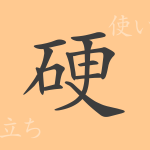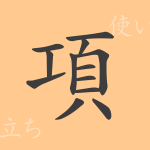The Japanese language is rich with numerous kanji characters, each with its unique meaning and history. The kanji “絞(こう)” is no exception. This article explores the expressive power of this single character and its role in Japanese culture and language. From its origins to its modern usage in everyday life, we delve deep into the fascinating world of “絞(こう)” to uncover its charm.
Origin of 絞(こう) (Etymology)
The kanji “絞(こう)” is believed to have originated from the act of twisting ropes. In ancient China, twisting was a crucial action in silk weaving processes and various tasks involving ropes, leading to the creation of this character. The concept of squeezing or twisting threads and fabrics evolved into more abstract meanings, and today, “絞(こう)” is used in various contexts.
Meanings and Usage of 絞(こう)
The character “絞(こう)” carries meanings such as “to squeeze,” “to strangle,” and “to wring.” It is widely used, from the physical act of squeezing to narrowing down information or options. For example, expressions like “絞り出す(しぼりだす)” (to wring out), “絞り込む(しぼりこむ)” (to narrow down), and “首を絞める(くびをしめる)” (to strangle) are common. Additionally, it can be used to describe mental anguish or difficulties.
Readings, Stroke Count, and Radical of 絞(こう)
The kanji “絞(こう)” reflects its richness in form and meaning.
- Readings: The on-yomi (Chinese reading) is “コウ(こう),” and the kun-yomi (Japanese readings) are “しぼる(しぼる),” “しめる(しめる),” and “こる(こる).”
- Stroke count: “絞(こう)” consists of 12 strokes.
- Radical: The radical is “糸(いとへん),” which categorizes it among characters related to threads or strings.
Idioms, Phrases, and Proverbs Using 絞(こう)
Idioms, phrases, and proverbs containing “絞(こう)” highlight the depth of its meaning. For instance, “絞り込む(しぼりこむ)” means to narrow down options, “首を絞める(くびをしめる)” signifies actions that backfire, “心を絞る(こころをしぼる)” expresses deep sorrow or suffering, and “絞殺(こうさつ)” literally means to strangle to death.
Conclusion on 絞(こう)
The kanji “絞(こう)” plays a crucial role in Japanese due to its wide range of applications and expressive power. From physical actions to emotional expressions, this character is utilized in diverse contexts, symbolizing the depth of the Japanese language and culture. Through this exploration, we have gained a deeper understanding of the multifaceted nature of “絞(こう)” and its function within our language.

























